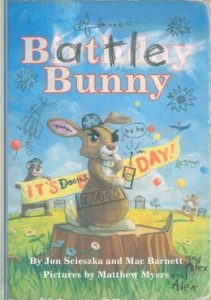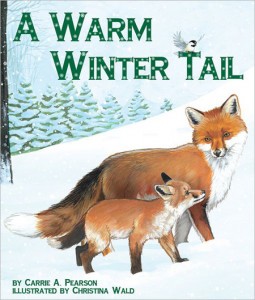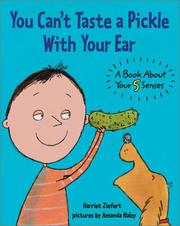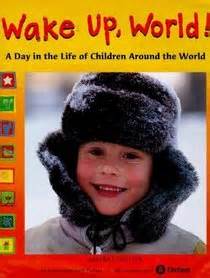Battle Bunny
 Happy February! This time last year, I was celebrating the sale of my first picture book, GROUNDHOG’S DILEMMA, to Charlesbridge. This February 2nd, I came home from a week of presenting seminars to a cool surprise: my husband (author/illustrator Matt Faulkner) just received the official layout of the book so he can begin making the art! Woohoo!
Happy February! This time last year, I was celebrating the sale of my first picture book, GROUNDHOG’S DILEMMA, to Charlesbridge. This February 2nd, I came home from a week of presenting seminars to a cool surprise: my husband (author/illustrator Matt Faulkner) just received the official layout of the book so he can begin making the art! Woohoo!
Of course, I won’t see any of the art until it’s passed my editor’s approval. In the publishing world, authors don’t get to communicate with the illustrators. I just happen to live with my illustrator. And because I’d like to continue living with him, I can’t watch over his shoulder as he draws my characters, because I’d be tempted to give helpful comments like, “Maybe his cheeks should be a little chubbier, and maybe you should….” So Matt will make his magic in his studio and I will try not to peek until my editor says I can!
Those of you came to my seminars last week have already seen my new favorite book: Battle Bunny written by Jon Scieszka and Mac Barnett (and Alex) with pictures by Matthew Myers (and Alex). Kids who love the humor of Captain Underpants will go nuts for this book, and you can use it to teach the Core Standard of Craft & Structure.
When you show students the cover, they might think this book has been defaced. Well, yes and no. Battle Bunny is supposed to look drawn on and scribbled over – that’s the brilliant premise of this book. A kid named Alex is supposedly given a sappy-sweet book called “Birthday Bunny” from his Gran-Gran. Alex transforms the book by crossing out words, writing his own words, and adding crazy details to the pictures. For instance, the line “Birthday Bunny started on his path, hopping through the trees” is rewritten as “Battle Bunny started on his Evil Plan, chopping through the trees” and we see the cute birdie in the tree now has a speech balloon saying “You will fail!”
Revising! Editing! Transformative writing! After you’ve talked with your students about the authors’ and illustrator’s craft of word choice, art design, etc. that add layers to the book, go to mybirthdaybunny.com. There’s a free lesson plan for teachers, and I love that you can print off the “original” sweet version of the story for kids to change. If you are super-brave, buy some beat-up books from the library’s used book sale or from a thrift store and let your students revise them. Just make it clear which books can be written in and which of your books are off-limits!
Read MoreA Warm Winter Tail
 Here’s what you need this chilly January: A Warm Winter Tail by Carrie A. Pearson and illustrated by Christina Wald!
Here’s what you need this chilly January: A Warm Winter Tail by Carrie A. Pearson and illustrated by Christina Wald!
This nonfiction picture book about animal adaptations in winter is perfect for a Range of Reading lesson (Core Standard #1 – check!). Carrie Pearson, a Michigander who knows all about staying warm in winter, uses a conversational tone to share a great deal of information. On each double-spread, kids learn what an animal does to stay warm in the winter when a baby animal wonders if humans do what they do to stay warm. For example, a baby box turtle asks its parent if humans dig deep into the mud and bury themselves like it does. A white-tailed deer asks, “Do they grow hollow hair/ so the coats that they wear/ trap the heat from their bodies for warmth?” A wide variety of animals is presented, and there’s plenty of extra information at the back of the book.
On their website, the publisher, Sylvan Dell, has an avalanche of free activities to go with the book (don’t you love not needing to recreate the wheel?) In the back of A Warm Winter Tail there’s a “Winter Animal Matching Activity” where students match the description with the correct animal, and if you go to sylvandellpublishing.com you can print off the animal sorting cards to make a fun independent/pairs/center activity. (Key Ideas & Details – Core Standard #2!) I can’t wait until February when a companion book, A Cool Summer Tail, comes out. Integrating Knowledge & Ideas – Standard #3!
For more information about the author, please visit: carriepearsonbooks.com.
For more information about the illustrator, please visit: christinawald.blogspot.com.
Read MoreYou Can’t Taste a Pickle With Your Ear
 When it comes to Common Core State Standards, the one that I think is the most fun is Range of Reading. (I know, I know, all the CCSS are fun, but this one is the most fun!) Range of Reading: Informational Text means we want kids to “read and comprehend informational texts, including history/social studies, science, and technical texts.” In other words, we can share all kinds of cool nonfiction books with our students, and I have a fun pick this week.
When it comes to Common Core State Standards, the one that I think is the most fun is Range of Reading. (I know, I know, all the CCSS are fun, but this one is the most fun!) Range of Reading: Informational Text means we want kids to “read and comprehend informational texts, including history/social studies, science, and technical texts.” In other words, we can share all kinds of cool nonfiction books with our students, and I have a fun pick this week.
You Can’t Taste a Pickle With Your Ear: A Book About Your 5 Senses by Harriet Ziefert with pictures by Amanda Haley is an informational picture book with a great sense of humor. It has some nice text features like a table of contents, an introduction, a conclusion, and questions at the end of each mini-chapter for discussion. The information presented about the five senses is appropriate for early elementary students and will work well for any “all about me” units as well as for health and science studies.
Read aloud the title You Can’t Taste a Pickle With Your Ear and you’ll get students grinning. You can read the 32-page book in one sitting, or read each mini-chapter devoted to a different sense one at a time. For an art activity that will bring together all the information in the book (so we’re Integrating Knowledge & Ideas as well as working on Range of Reading), have students make a self-portrait and label the body parts they use for each of the five senses. To get those Nature Smart/experiential learners really involved, bring in pickles for the class. Students can write about how they used each of their five senses as they look at, smell, touch, hear (long crunchy pickles that snap in half work best), and taste. Remind your students again about the title of the book (but keep paper towels on hand in case any of your students feel the need to test for themselves.)
Read MoreWake Up, World!
 “We all should know that diversity makes for a rich tapestry, and we must understand that all the threads of the tapestry are equal in value no matter what their color.” – Maya Angelou
“We all should know that diversity makes for a rich tapestry, and we must understand that all the threads of the tapestry are equal in value no matter what their color.” – Maya Angelou
Books that celebrate diversity are perfect at the beginning of a new school year. We want our students to know that all of us are valued because of, not in spite of, the unique characteristics we possess. Wake Up, World! A Day in the Life of Children Around the World by Beatrice Hollyer in association with Oxfam shows students in an accessible way what life is like in different parts of the world.
Meet eight children from places like Vietnam, Ghana, Brazil, and the United States. From waking up and eating breakfast, to going to school and doing chores, to going to bed (or hammock), readers will love the photos and descriptions of what life is like for kids just like them in other countries. (You will love how easy it is to work in Range of Reading and Integrating Knowledge & Ideas with one book, and even tie it into a mapping unit if you are so inclined.)
One of the children, Natali, is from California in the United States. With the paragraphs about Natali especially, your students may find themselves saying “that’s just like me!” or “I don’t do that!” You can play a game called “Cross the Line” with information you find in this book. Line all of your students on one side of your classroom, and either imagine a line down the middle of the room, or put one there with masking tape (and thank your custodial staff for being so nice to teachers who put down tape on the floor.) Choose situations from the book like “if you drink walk to school like Linh from Vietnam does, cross the line.” Students can easily see who shares that characteristic with them. Wake Up, World! is also an ideal writing prompt. Your students can write about what they eat for breakfast, etc. for a book like “Our Classroom Wakes Up”or for individual books.
For more information about Oxfam, please visit oxfam.org.
Read More






